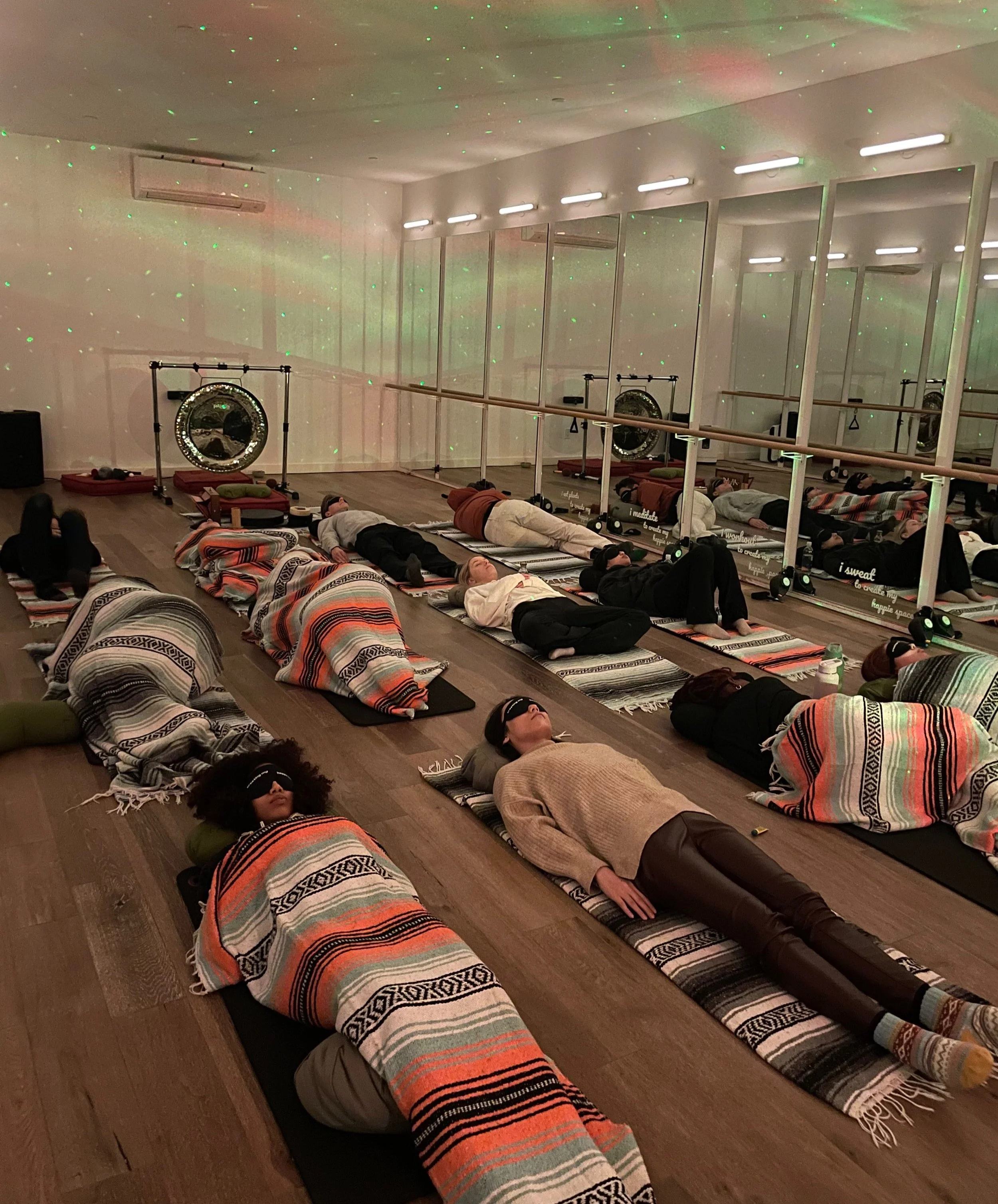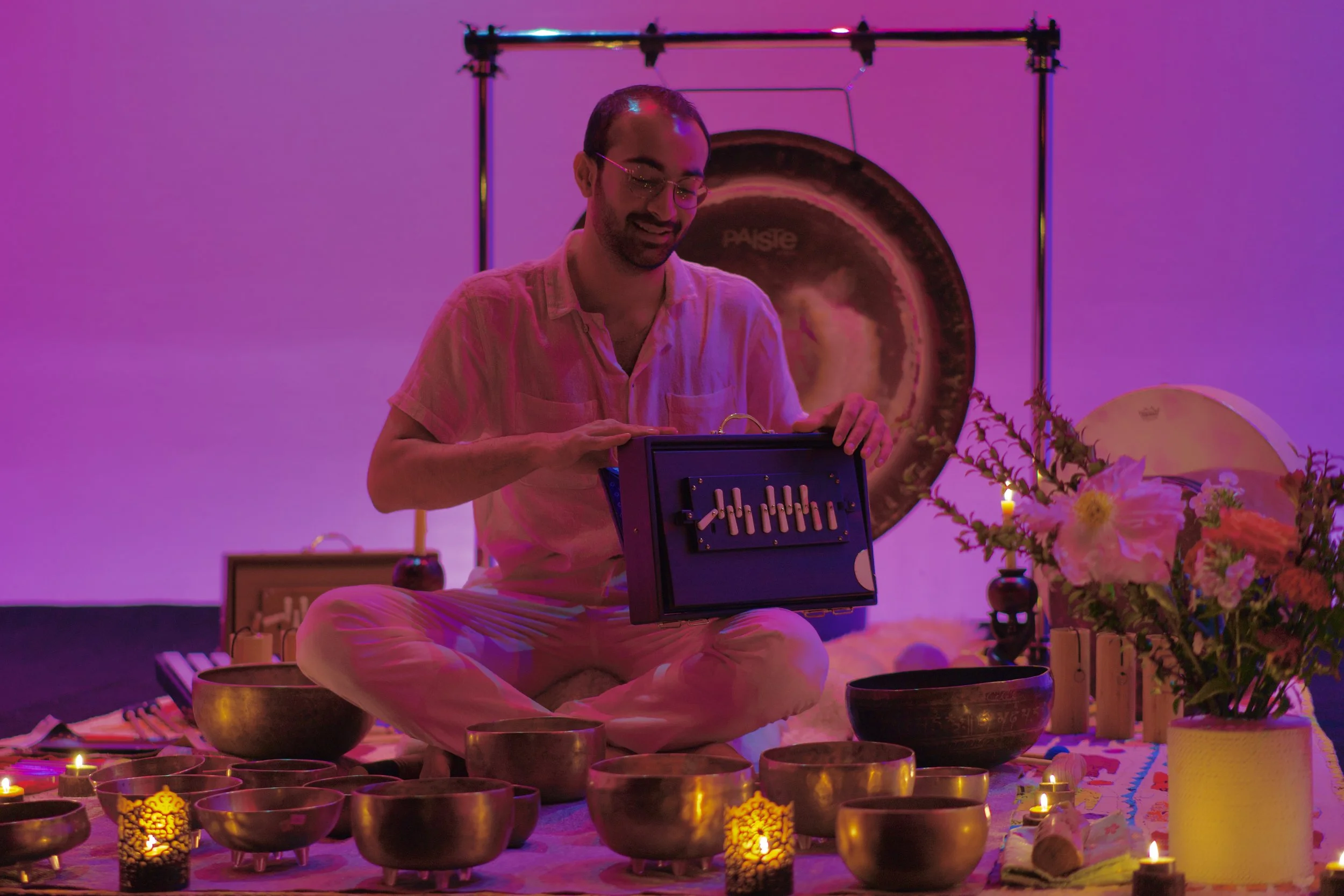Sound Meditation
The practice uses sound as a medium to reveal reality - the inner workings of your psyche, the subtle movements of energy in your body, and the lens through which you view the world around you. This meditation modality uses overtone rich sounds to help focus the mind.
We are living in two worlds - inner and outer. The inner world is our personal reality. Everyone perceives it differently. We use our mind with all its ego and beliefs to make sense of the world we see outside and that becomes truth for us. Given that we all have had different past experiences, thoughts, problems, and beliefs, we simply have a different way to understand reality. When we forget this, we close ourselves to the layers of reality. Its like choosing to be blind. We get attached to our thoughts - the chatter in our head. There is always a discussion happening in our mind – robbing us of clarity and engagement with the outside world. Our mind doesn’t know how to stay free, so it thinks compulsively. Hence, our perception of the reality is largely influenced by this chatter. If I am talking to myself all the time, I am not creating space to listen to anything else.
Instead of relying on our senses, we rely on our thoughts to perceive reality. This puts us out of balance - the inner world and the outer world diverges.
We meditate to flow with the thoughts rather than be burdened by them. Imagine carrying the multiplicity of troubles of the past and the expectations from the future, taking all that space in your present moment. In our meditation practice we work on removing these shackles as well as learn to artfully incorporate mindfulness and contemplation.
The overtone rich instruments produce a wide spectrum of harmonics to reveal sound’s psychoacoustic properties embedded with the complex mathematical ratio. This easily induces a therapeutic, non-ordinary state of consciousness in a meditative setting. Our ears can perceive the tiniest differences in frequencies, much more so than our eyes. Yet, we primarily rely on our eyes to perceive reality.
By shifting from the passive act of hearing to the active act of listening,
we gain a dimension of reality.
When our brain is fully engaged in listening the full harmonics of these overtone rich instruments, it doesn’t have the capacity nor the need to do something else as it is pretty fascinated by the vibrations it’s receiving. The chatter slows down such that you can feel your presence. Your higher self reveals to you.
FAQs
-
A session begins with an informative talk that will provide you with context and guide you in the work. You will then be invited to lie down on a mat with eyes covered. We will begin with diagrammatic breathing to activate the parasympathetic nervous system and increase oxygen flow to the brain. This helps bring focus to the present moment and tune in with the sensations of the physical body. This will be followed by vocal toning exercises or humming to connect with our own voice and massage the vagus nerve. The vagus nerve is the longest cranial nerve that runs from the brain stem to the abdomen passing through head, neck, and thorax. It regulates critical functions of digestion, heart rate, and breathing. Humming creates vibrations that simulates this nerve and can increase vagal tone. In effect by simply humming, we are massaging our internal organs. For the majority of the time we will listen to a wide range of instruments.
-
It is a common misconception that meditation is used to free ourself from the thoughts or distract oneself from troubles. This is completely false. We cannot address our problems by looking the other way. They can only be addressed by digging into it. Meditation aims to still the mind from unwanted cognitive loops to then focus on the root cause.

